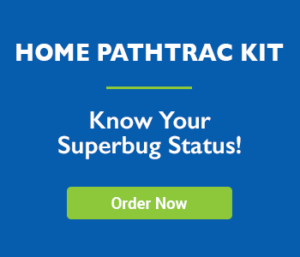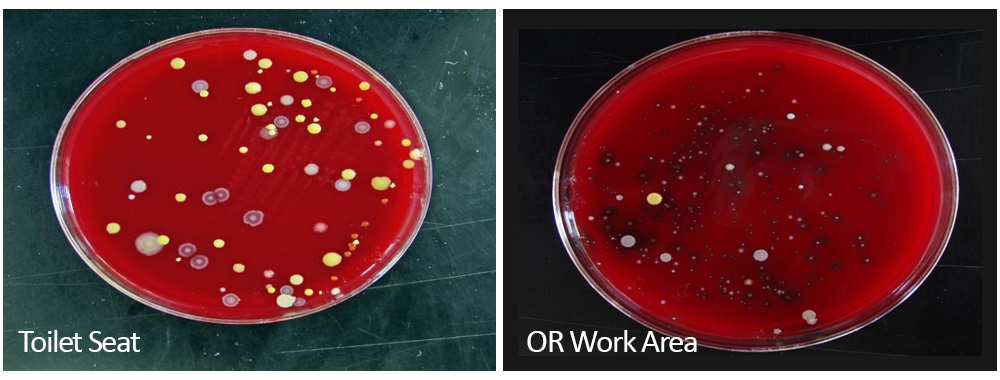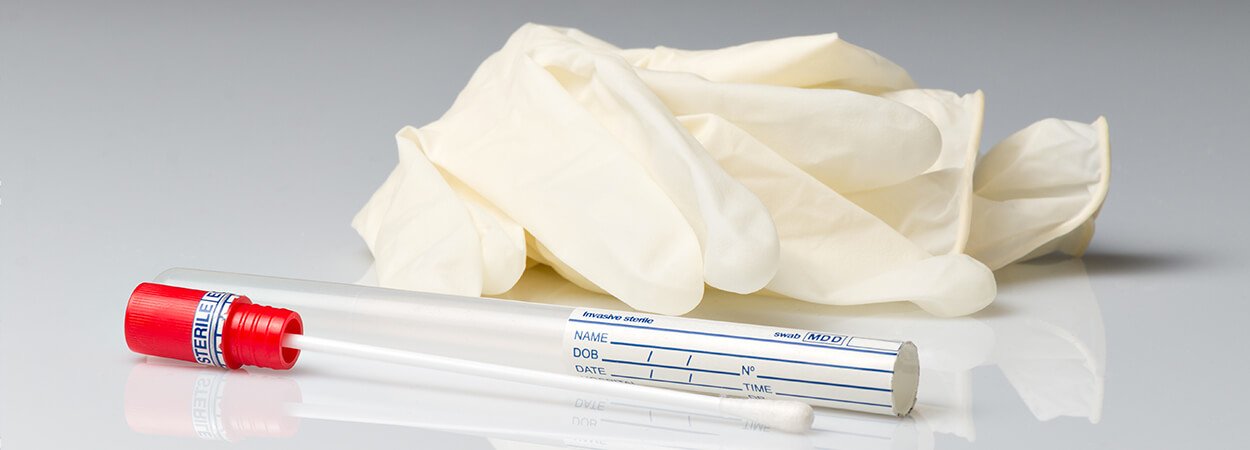RDB serves both patients and hospitals to protect the patient through the entire operative experience, before, during, and after surgery.
A Unique, Comprehensive Decolonization Program
 RDB offers a unique, comprehensive decolonization program that can reduce the risk of infection by approximately 50%. RDB identifies and reports patient Enterococcus and S. aureus with optional Klebsiella, Acinetobacter, Pseudomonas, and Enterobacter (ESKAPE) colonization status directly to the patient for the purpose of guiding evidence-based decolonization strategies prior to surgery. RDB’s HIPAA and CLIA compliant medical laboratory utilizes OR PathTrac technology to efficiently process and catalogue bacterial samples that you provide through use of simple RDB collection kits. Unique bug identification numbers generated by OR PathTrac will serve to identify organisms that through consultation with Dr. Randy Loftus at RDB and with your local physician, you can eradicate infection-causing bacteria with simple, effective steps prior to surgery and use to better understand your surgical risk. Our program can compare later samples following your healthcare exposure to assess for transmission of new pathogens during your hospital stay. Work with RDB to decolonize today to cut your infection risk by more than half.
RDB offers a unique, comprehensive decolonization program that can reduce the risk of infection by approximately 50%. RDB identifies and reports patient Enterococcus and S. aureus with optional Klebsiella, Acinetobacter, Pseudomonas, and Enterobacter (ESKAPE) colonization status directly to the patient for the purpose of guiding evidence-based decolonization strategies prior to surgery. RDB’s HIPAA and CLIA compliant medical laboratory utilizes OR PathTrac technology to efficiently process and catalogue bacterial samples that you provide through use of simple RDB collection kits. Unique bug identification numbers generated by OR PathTrac will serve to identify organisms that through consultation with Dr. Randy Loftus at RDB and with your local physician, you can eradicate infection-causing bacteria with simple, effective steps prior to surgery and use to better understand your surgical risk. Our program can compare later samples following your healthcare exposure to assess for transmission of new pathogens during your hospital stay. Work with RDB to decolonize today to cut your infection risk by more than half.
Limiting The Spread Of Bacterial Pathogens Acquired During Care
After surgery, RDB serves patients and the community to limit spread of bacterial pathogens acquired during care. RDB is also engaging hospitals to implement bacterial surveillance so that OR hand hygiene, intravascular device design and handling, environmental cleaning, and maintenance of the sterile surgical field can be optimized in order to prevent spread of dangerous bacteria between patients undergoing care in the same arena. Ask your hospitals to ensure that measures are in place to reduce bacterial spread between patients so that you don’t get someone else’s “SUPERBUG” to bring home.
The checklist provided in this website (see documents for free download) can be used to help guide assessments of OR safety, as can the following website that allows the consumer to compare the rates of potentially avoidable complications across hospitals: https://www.medicare.gov/hospitalcompare/Data/Healthcare-Associated-Infections.html

Consultation To Review Hospital Safety Check List Results
RDB is happy to consult with you to review hospital safety check list results to help ascertain quality of infection control services offered. If a given hospital is unable or unwilling to complete the provided safety checklist prior to your surgery, keep in mind that as opposed to the 1800’s, the impact of transmission of deadly bacteria is clear. It is up to you to decide whether you want to take that risk. Demand a culture of patient safety at any hospital that compromises your first line of defense against infection with the incision and your second line of defense by suppressing your immune system with inflammation, medications, and anesthetic agents.
- patient skin sites are contaminated with deadly bacteria in 20-30% of cases
- undetected bacteria before surgery can result in difficult to treat infections
- colonizing bacteria can spread to other patients in the hospital
- decolonization is a proven method for reducing infection by approximately 50%
- hospitals are not universally employing this evidence-based strategy
- RDB Bioinformatics is here to help patients on their path to infection prevention by addressing this gap

